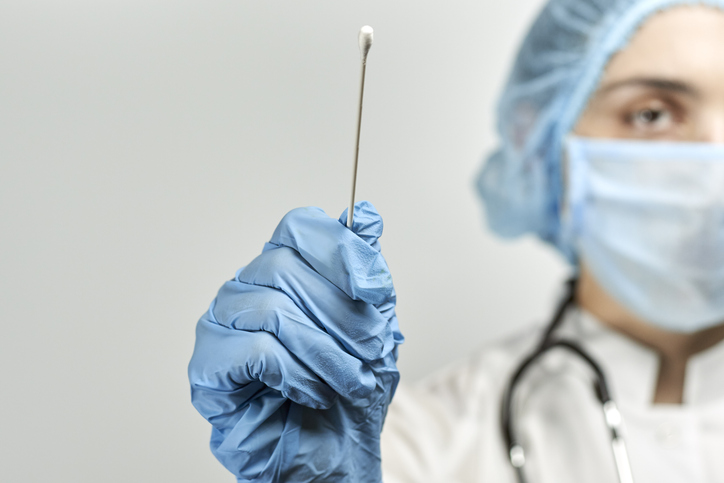40% of the patients with HHV-6 DNA had CNS symptoms, compared to 14.3% of the HHV-6 negative patients.
The neurologic complications of both acute COVID-19 and “Long COVID” could stem, in part, from reactivation of latent herpesvirus infection by the SARS-CoV-2 infection. Brazilian investigators collected nasopharyngeal swab samples from all 53 patients with PCR+-SARS-CoV-2 infection who were admitted to an ICU, and tested them for all human herpesviruses, using qRT-PCR to estimate viral load. No comparison group—such as less severely ill patients who were SARS-CoV-2-PCR+, ICU patients with severe pneumonias other than COVID-19, or SARS-CoV-2-PCR- individuals was included.
The frequency with which herpesvirus DNA was detected was: HHV-6 (47.2%); CMV (43.4%); HHV-7 (39.6%); EBV (28.3%); HHV-8 (17%); HJSV-1 (17%); VZV (7.5%); HSV-2 (1.9%).
Of COVID-19 patients positive for any herpesvirus, 24% had central nervous system (CNS) symptoms and 7.5% had symptoms relating to the peripheral nervous system (PNS). The presence of central (but not peripheral) neurological symptoms was significantly associated with the detection of HHV-6 (p=0.034), but not with the detection of the other human herpesviruses—although the power to detect such an association was not strong given the small number of patients. In the severely ill COVID-19 patients, a statistically significant association was found between neurological symptoms and the detection of HHV-6 DNA in nasopharyngeal swabs (p=0.034).
The investigators did not find any significant relationship between corticosteroid use or lymphocytopenia and herpesvirus reactivation, although the power of the study to recognize such an association was not strong.
An earlier study of HHV-6 in the nasal swabs of moderate to severe COVID-19 cases was conducted in Brazil in 2021 by Lino et al. They found 21.7% of 60 COVID-19 patients positive for HHV-6. The group also found that HHV-6+ COVID-19 patients were more likely to be under treatment with immunosuppressive drugs (p=0.01).
An Italian study (Paolucci 2021) that tested for EBV and CMV DNA in whole blood, bronchoalveolar lavage and nasal swabs, found EBV in 90 out of 103 severely ill COVID-19 patients, and they found a higher viral load in ICU compared to sub-ICU patients (P=0.0289). This study tested only a small subset for HHV-6.
The authors recommend that future investigations focus on the role of herpesviruses in modulating the immune system during COVID-19.
Read the full paper: de Souza Carneiro 2022

